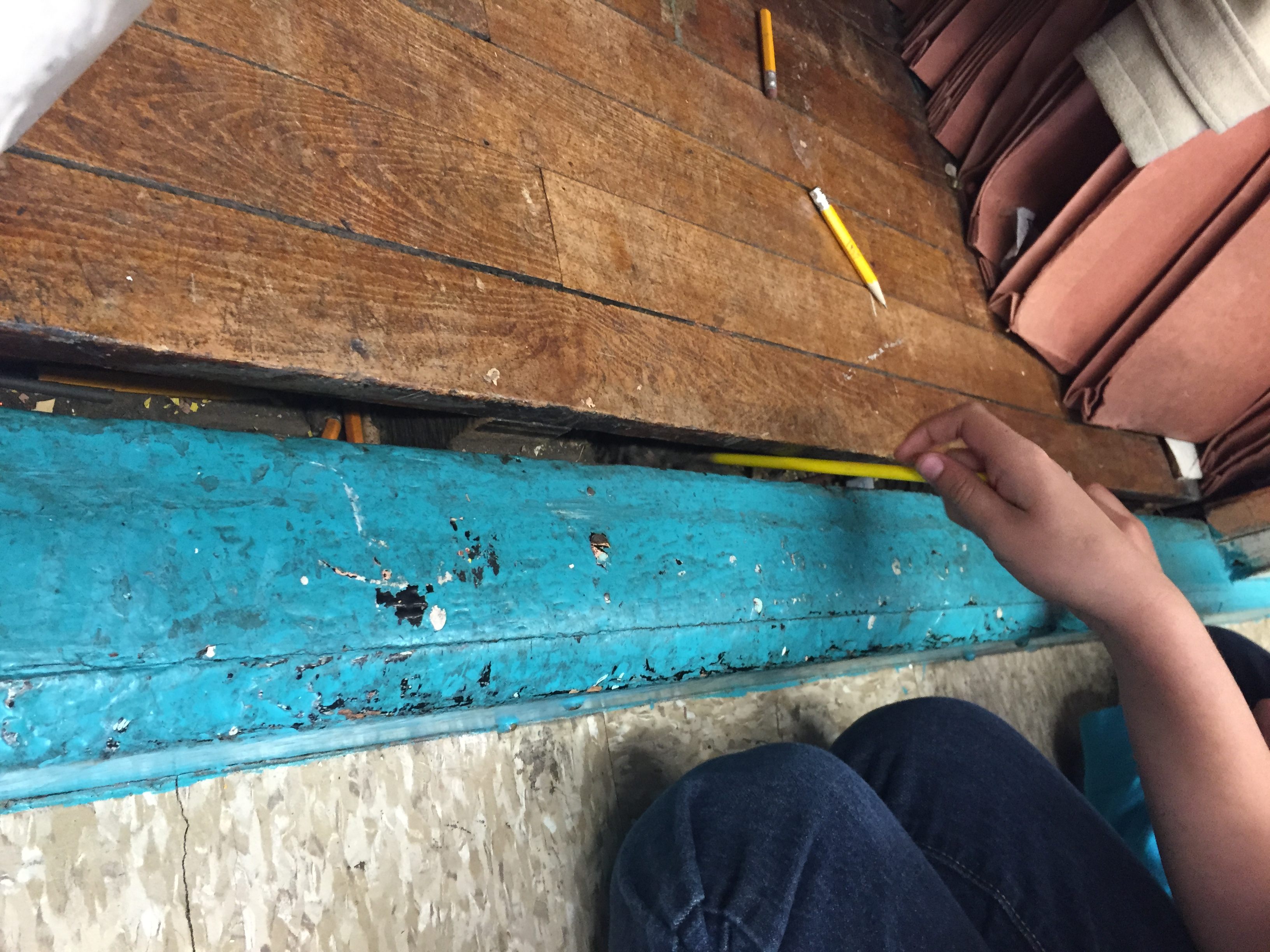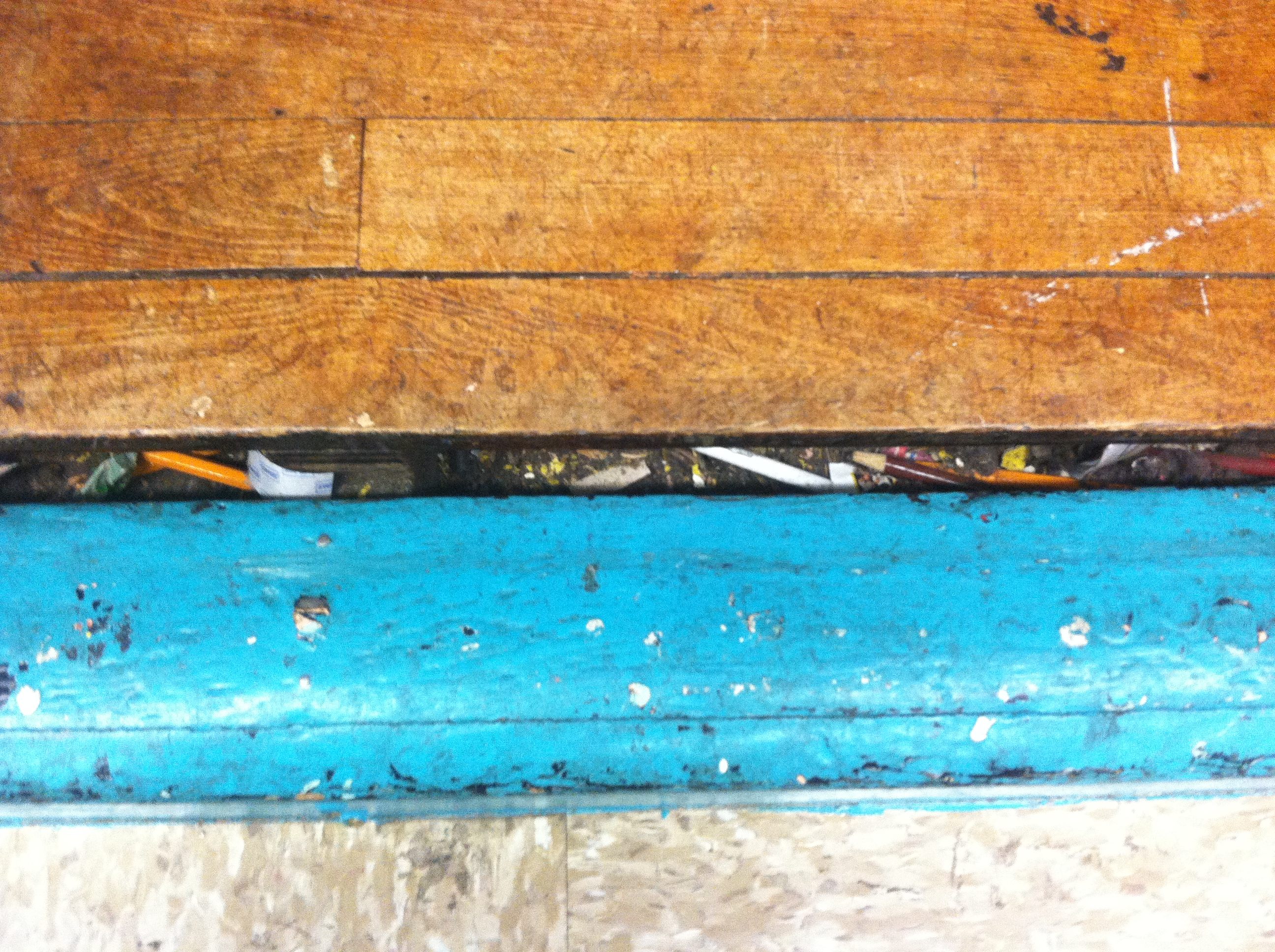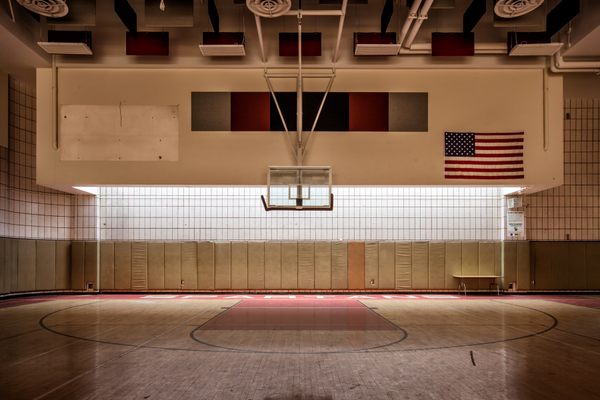What Fourth-Grade Archaeologists Have Found in Their School’s Closet
A century of history was hiding in a Manhattan elementary school.

When a fidgeting fourth grader in Miriam Sicherman’s class at Manhattan’s Children’s Workshop School started pulling up junk from under some floorboards, it seemed like a harmless way to pass the time. Little did she or her students know that within a couple of years they’d be putting together a museum exhibit based on over 100 years of discarded history, all excavated from their school’s closets.
Currently on display at the City Reliquary in Brooklyn, Closet Archaeology displays a collection of forgotten ephemera that Sicherman’s students have discovered underneath the floors of their East Village school. Their collection of coins, wooden toys, and scraps of old homework started in 2015 with student Bobby Scotto, who was the first to start exploring a little gap in the floor. “I’ve been in that room since 2001, and it never occurred to me to look for that stuff. It was really [the students],” says Sicherman.
Sicherman’s classroom is in P.S. 61, a school building that dates back to 1913. Once a single school, it is now home to three separate schools, including the Children’s Workshop. Sicherman’s classroom closet, original to the building, once had sliding doors, but when they were removed for whatever reason, it left a gap in the floor where the runner used to be. The gap opens into a hollow space that’s acted as a perfect trap for all sorts of tiny items. “We assume a lot of things, like candy wrappers, were shoved in there to not get in trouble,” says Sicherman.


In the beginning, as students would find little trinkets and artifacts, she would let the students take them home, not thinking much of it, but as more and more interesting things were unearthed including old pins, wooden puzzle pieces, and snuff tins, Sicherman realized they were on to something.
After fishing out what he could from the surface of the gap, Scotto began going deeper, using pencils and wire hangers to reach farther back. As he pulled out more and more items, the whole class got interested in digging under the closet floor. The students quickly caught archaeology fever, says Sicherman, and they ultimately worked together to create a catalogue and preservation system for their finds.

As the project grew, Sicherman asked some of the kids to bring back some of the items they’d brought home earlier. This didn’t sit well with all of the young explorers, who had come to hold a sense of ownership over their finds. “They were really mad, and they never quite got over it,” says Sicherman. “I started calling it archaeology right from the beginning, and I decided to try and find a professional archaeologist who could come talk to the kids about it.” It was only after an archaeologist from Columbia University came to speak to the class, and treated them like real researchers, that Sicherman says the kids felt better about relinquishing their treasure.
Scotto and his classmates continued to dig even after they’d advanced out of Sicherman’s class, returning when they could to keep looking under the floorboards. Later classes also helped to continue the project. Through a small grant and donations, Sicherman was able to secure some basic archival supplies to better preserve their finds. She also put some of the more remarkable items on display in a case in the school’s library.

Eventually, Sicherman and the kids got permission to lift some of the loose boards. They also found that other classrooms in the building had the same gap in their closets. According to Sicherman, to date students have managed to work their way through 10 closets.
P.S. 61 has always been home to a school, and many of the most interesting items that Sicherman’s students have found clearly belonged to kids. Old coins, penny candy wrappers, and pencils are common. Much of the paper ephemera has been chewed up and destroyed by mice, but some finds are pristine. “Some paper I guess the mice don’t like, because some paper items are totally intact, including this envelope, which still had two dollars in it,” says Sicherman. Still other items recall other parts of the building’s history, such as 10-cent movie tickets that date back to when there was a cinema next door, and even older items that point to P.S. 61’s role as a draft center during both World Wars. “That did mean that there were lots of young men in the building at times,” says Sicherman. “Which may account for some of the tobacco and alcohol-related items that we have.”

Sicherman’s most recent class even managed to track down a handful of the original owners of some of the items, some of whom were able to come back and visit the class.
And there’s still likely much more to find in the school. “A lot of people are baffled by the whole thing, like how could there be so much stuff,” says Sicherman. “That surprised me too until I sat down and did the math and realized that the building is 100 years old, the school year is ten months out of the year. You drop a couple of things down there a month, and over 100 years, you’re going to have a couple thousand items.”
Sicherman says she’d like to continue excavating the rest of P.S. 61 as much as possible. She’s been in contact with one of the other schools in the building and would like to try and work out a way to search their closets as well.
It could take years of coordination and planning to search the entire building. Which might not be a bad thing if it means more and more kids will get to take part in this unique opportunity for urban archaeology. “It sounds very trite, but [the students] have developed this sense of wonder that anywhere in the world, in the most ordinary place, there can be something fascinating, and it’s worth checking things out.”










Follow us on Twitter to get the latest on the world's hidden wonders.
Like us on Facebook to get the latest on the world's hidden wonders.
Follow us on Twitter Like us on Facebook